We don’t often celebrate a plant for its stems, but stems are what candelilla (
Euphorbia antisyphilitica) is known for. Its vertical stems, which resemble little candles, have made it an increasingly popular accent plant in drought-tolerant Southwest gardens. Full sun and limited water aren’t a problem for this succulent; it thrives where many plants wither, including areas that bake in hot, reflected sun, making it a great choice for areas that require drought tolerance and low maintenance.
Not in the Southwest? Browse plants native to other regions of the U.S.
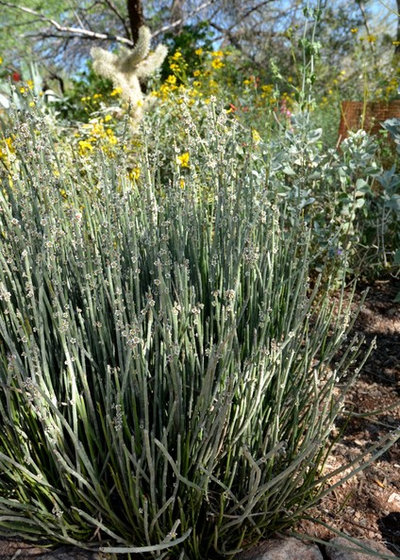
Noelle Johnson Landscape Consulting
Botanical name: Euphorbia antisyphiliticaCommon names: Candelilla, wax plant
Origin: Native to New Mexico, southwestern Texas and Mexico
Where it will grow: Hardy to 10 degrees Fahrenheit, or minus 12 degrees Celsius (USDA Zone 8; find your zone)
Water requirement: Drought tolerant once established but does best when watered monthly in late spring through early fall; can survive on natural rainfall in winter
Light requirement: Full sun, including reflected sun
Mature size: 1 to 2 feet tall and 2 to 3 feet wide
Benefits and tolerances: Drought-tolerant
Seasonal interest: Small white and pink flowers in spring
When to plant: Spring or fall
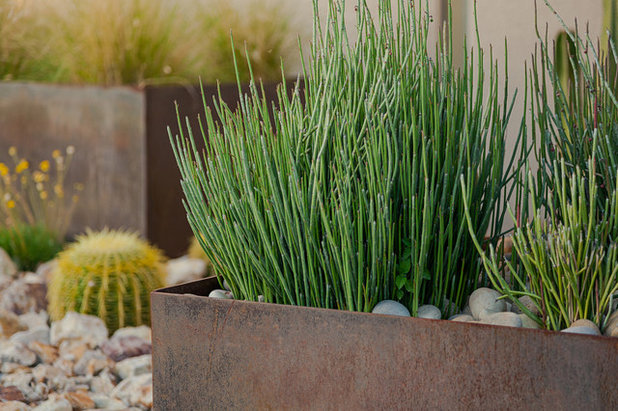
Coffman Studio
Distinguishing traits. This succulent’s 1-foot-tall stems are ¼ inch in diameter and covered in a waxy material that gives it its characteristic gray-green color. Candelilla can attribute its exceptional drought tolerance to the wax coating on its stems, which helps prevent water loss. Small ⅛-inch-long leaves occur briefly on new growth but soon drop.
Growth is slow and occurs via rhizomes, which are underground stems. Supplemental water (monthly in spring through fall) can increase the rate of growth and promote additional flowering.
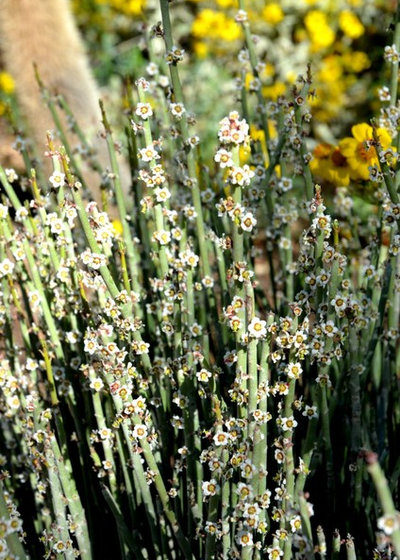
Noelle Johnson Landscape Consulting
Late winter or early spring’s arrival brings about tiny pink and white flowers that are 1/16 to ⅛ of an inch across. Flowering occurs toward the top of the stems and can reappear in summer and fall in response to rain. It’s important to note that exceptional drought conditions may prevent flowering.
Like other Euphorbias, the interiors of the stems contain a milky white sap that is irritating to the skin, so avoid contact with it.
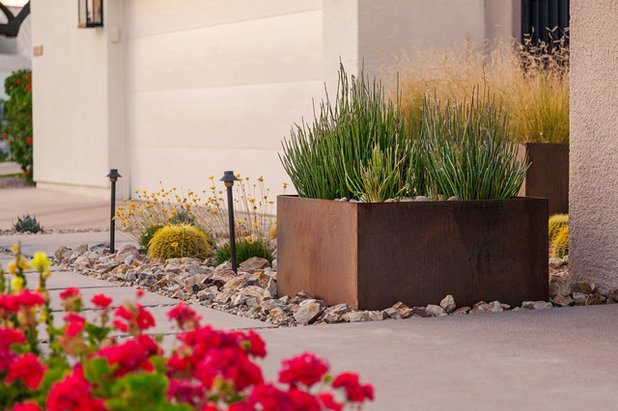
Coffman Studio
How to use it. Candelilla is quite versatile in the landscape, and its needs are few. It’s perfect for areas that receive full sun where irrigation may not be present. Candelilla also makes a great container plant.
For a natural-themed landscape, plant candelilla next to boulders for a textural contrast. For a contemporary look, plant this succulent in a straight line along a pathway or in a staggered pattern in a raised bed or median — it looks great when planted in odd numbers.
Bring attention to its narrow stems by planting it with other cactuses and succulents that have wider shapes, such as victoria agave (
Agave victoria-reginae), golden barrel (
Echinocactus grusonii) or Santa Rita prickly pear (
Opuntia santa-rita).
Pair it with the ground cover blackfoot daisy (
Melampodium leucanthum) or other ground covers that have dark green foliage, which will contrast nicely with candelilla’s gray-green stems and upright growth.
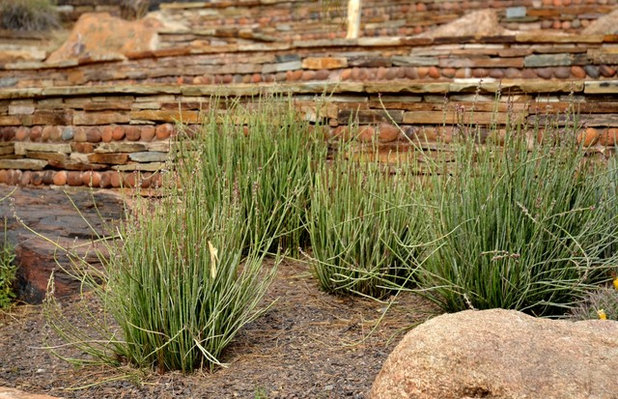
Noelle Johnson Landscape Consulting
Planting notes. Candelilla, like many Southwestern natives, isn’t fussy, but it does need full sun and well-drained soil. When planted in the ground, it needs a monthly watering in spring through fall.
If you plant it in containers, water it twice a month in spring through fall and monthly in winter. Be sure to use a planting mix specially formulated for succulents. Candelilla will need fertilizer if planted in a container. Use a liquid fertilizer (fish emulsion works well) at half the recommended strength, two to three times in spring and summer.
More Lush Gardens With Low Water Needs
Browse plants native to other regions of the U.S.





